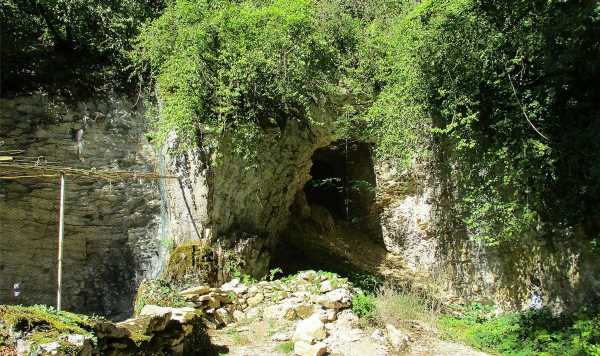Human skeleton found 'covered in crystals' says insider
The bone, specifically a hip bone known as an ilium, was excavated from a cave in France several decades ago but has only now been analysed.
Discovered in the vast Grotte du Renne cave complex, the site is considered to be one of the most exciting Paleolithic sites in Europe.
The remains of Neanderthals have been found there — the lower layers indicating that this distant relation of modern-day humans once called the site home.
Its upper layers indicate a time when anatomically modern humans (AMHs) inhabited it, but researchers have also found a layer which suggests a period of co-existence of both hominids.
The ilium — one of the three bones that make up the human pelvis — was found to belong to a newborn whose morphology, or shape, required intense and thorough analysis to compare it to 31 contemporary humans and two Neanderthals.
READ MORE Archaeologists’ Ancient Egyptian ‘find of a lifetime’ beneath Cairo’s streets
Yet, the bone was found neither to be Neanderthal nor entirely anatomically modern human.
Comparing it with other baby Neanderthal bones, the team found that its shape differed from both species.
It suggests the bone represents a clear lineage of Homo Sapiens but with slight differences from AMHs.
Don’t miss…
‘One of most exciting finds in Egypt’ as discovery rewrites history[REPORT]
‘Remarkable’ hoard of Ancient Greek treasure unearthed at ‘special’ site[LATEST]
Unique prehistoric Egyptian cemetery revealed to be ‘world’s first zoo'[INSIGHT]
We use your sign-up to provide content in ways you’ve consented to and to improve our understanding of you. This may include adverts from us and 3rd parties based on our understanding. You can unsubscribe at any time. More info
Writing in their paper, the researchers note: “Our results indicate a morphological distinction between the ilia of Neanderthals and anatomically modern neonates.
“Although AR-63 is slightly outside recent variability, it clearly differs from the Neanderthals.
“We propose that this is due to its belonging to an early modern human lineage whose morphology differs slightly from present-day humans.”
Researchers also found a series of stone tools inside the Châtelperronian cave, at a layer known as the techno-cultural complex, where many flints and similar technologies have been extracted.
They propose that some of the tools may have been created as a result of diffusion — techniques and skills passed or learned from one culture to another region.
If this theory is to be believed, AHMs would have developed tools that Neanderthals would have adopted and possibly modified to suit their needs.
This cross-over may have occurred during the time when Neanderthals and AMHs coexisted across Europe for several thousand years.
Source: Read Full Article


